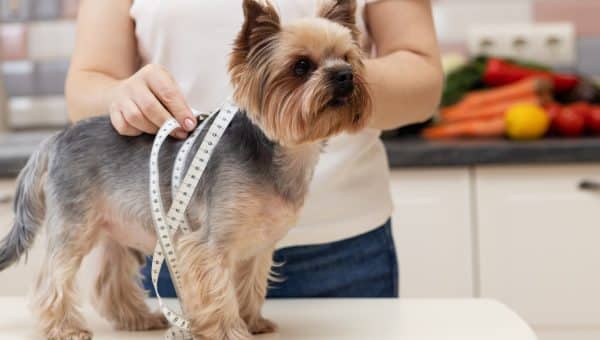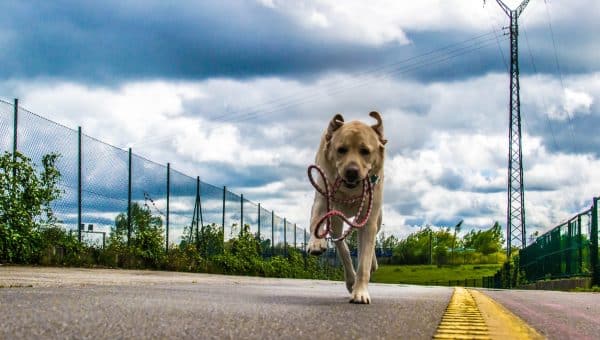- Not a substitute for professional veterinary help.
In a perfect world, your dog would be able to tell you exactly what they need when they need it. Unfortunately, dogs lack the language skills to communicate and ask for help when they need it. But just because they can’t communicate with words doesn’t mean they don’t communicate at all! Your dog will definitely find a way to get the point across when he needs something from you. And the main way he’ll do it? Body language.
Dogs use their bodies as a way to communicate. If you can learn to read your dog’s body language, you can figure out exactly what it is your dog needs, whether that’s a refill of their water dish, a game of fetch, or just a good, old-fashioned belly scratch—no words required.
But how can you read your dog’s body language to figure out what they want or need? Here are five ways your dog asks for help (and how to recognize each).
1. Your Dog Shies Away From Pets
Typically, dogs love a good belly rub or ear scratch. But if your dog flinches or pulls away from pets, they could be in pain.
If your dog is exhibiting this behavior, pay attention. Do they only shy away when you try to pet a certain area of their body? Do they flinch when you touch them in a certain spot? These are all signals that your dog is in pain—and that they’re trying to tell you they’re hurting.
2. Your Dog Exposes Their Belly
On the flip side, if your dog rolls over and exposes their belly, they’re sending a very different message. That message is: “I need a little attention, so please, please, PLEASE give me some pets!”
Exposing the belly is a submissive behavior for dogs. If your dog gives you the belly, they see you as trustworthy.
If your pet rolls over and shows their belly the next time you walk by, make sure to stop for a minute and give them the love and attention they’re seeking.
3. Your Dog Stares at You
Have you ever been sitting on the couch, minding your own business—only to look up and see your dog staring at you intently?
If your dog stares at you, they’re making direct eye contact to communicate they want something. Staring isn’t correlated to one specific want or need; your dog could be staring at you because they’re hungry, because they need to go outside and use the bathroom, or because they’re ready to go to bed.
Notice your dog is staring at you all the time? Spend some time trying to figure out what they might need. When you figure it out, he’ll be sure to let you know (most likely with a bark!).
Your Dog Paces Often
Pacing is an anxious behavior in dogs. If they’re walking around in circles, they’re most likely nervous or uncomfortable.
If you notice your dog pacing, assess what it is about the current situation that might be making them anxious. Then, figure out how to remove that element from the equation and put your pup at ease. For example, if you notice your dog pacing back and forth while there’s construction going on outside your home, they could be feeling anxious thanks to the loud and unfamiliar noises; relocate them to make them feel more calm and comfortable.
Once you help your dog get out of the uncomfortable situation, they should feel less anxious and stop the pacing.
Your Dog Excessively Licks or Grooms
Dogs sometimes injure themselves. If they do, they’re going to do everything they can to alleviate pain. One of the most common ways dogs deal with pain is through excessive licking or grooming.
If you notice your dog is licking, biting, or grooming a specific area of their body more often and for longer, check the area for any injuries and, if necessary, get them to the vet for pain treatment.
Takeaway
Because your dog can’t just pipe up and tell you when they need help, it’s up to you as a pet parent to pay attention. Look for ways your dog might be trying to communicate, and take action to get your dog exactly what they need to be their happiest, healthiest self.










